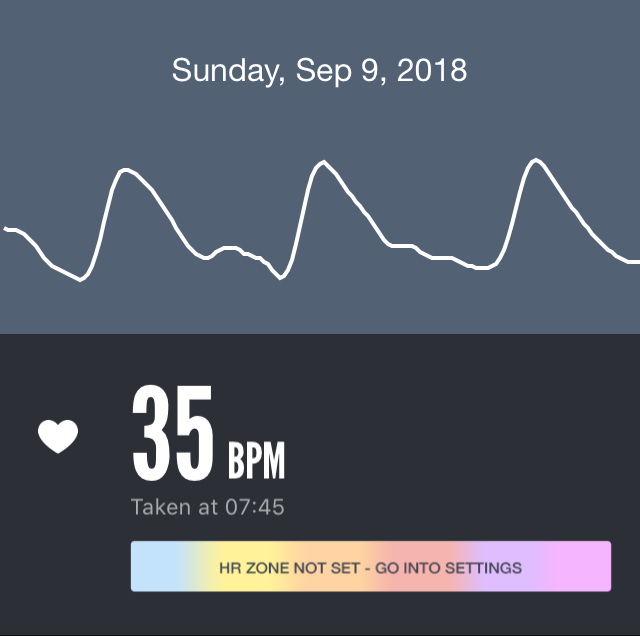2017 (39)
2018 (68)
2019 (88)
2020 (79)
2021 (86)
2022 (83)
2023 (72)
2024 (45)


It later came to me that in the past, when I was sick, my
parents always gave me something "easy to digest." That made
sense intuitively. The body needed the energy to fight the
virus and it was better not to spend on anything else. White
flour would be good in this particular case. To the extreme,
many hospitalized people (my dad came to mind) "eat" by
injecting glucose directly into their veins.
A good indicator of the body fighting is the heart rate.
These days, I only measure after doing three rounds of
breathing exercises in the morning. I know they slow down
HR (bradycardia) but feel that the exercises remove random
errors (from coffee, e.g.). My normal HR therefore is not the
typical "Resting HR" but much lower, about 40. The days
when the last flu hit, HR went up and then down in a
perfectly symmetric pattern: 40(Thu), 42(Fri), 48(Sat),
52(Sun), 48(Mon), 42(Tue), and 40(Wed).
In his article "The Cost of Adaptation," Pavel gave the
concept of cardiac output through an example:
Say, Bob’s tissues need a gallon of blood a minute
at rest and his heart can pump out 1.3 gallons per
minute max, which is average — this is called the
maximal cardiac output. Everything is fine and dandy
— until the man goes to South America and catches
typhoid fever. His energy requirements skyrocket.
Fighting a disease is not unlike performing hard
labor. Typhoid fever doubles one’s oxygen
consumption. The heart now has to pump two gallons
of blood per minute...
Under the flu, my body needed more energy and that showed
in higher heart rates for higher cardiac output. This all made
sense.
In this light, The food combination theory in the Gracie Diet
and what Steve Maxwell said about training also make sense.
I recall vividly Rickson munching on bananas between bouts
in the documentary film "Choke." Often ignored since it is
invisible, digestion is costly nonetheless. Training puts a great
demand on one's body and competes for energy with digestion.
Therefore, diet is super-important for athletes (not that it
is not important for everyone else). *
This morning, after breathing exercise, my heart rate
dropped to 35 (according to an app my friend L helped
installing on my iPod last Fri), a new personal record.
* This gave me the idea to measure HR after eating certain
type/amount of food to determine energy cost.




The white flour is evil. There is no doubt about it. Marathon runners, swimmers (Michael Phelps eating pizza comes to mind), hard-labors, etc., can have white flour during training. Once retired and inactive as office workers, they suffer all the same. Sick people may use it to avoid digestion burden but there are better alternatives.